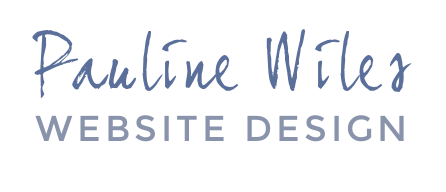Top 3 Affordable Website Builders
• This article contains affiliate links •
Last week I shared my adventures in exploring different website builder tools, and my firm belief that there are several aspects you should research before you invest too much time learning any single option when trying to create your own website.
Today, I'm summarizing my findings, with my recommendation for what I believe are the 3 best DIY website builders, that are most worthy of your attention.
Read on, or watch this as a video, instead.
Before we get started, there is way too much advice on the internet trying to tell you that something is "best", without any attempt to tailor that advice for your needs. So let me address that first.
Who are these recommendations for?
These suggestions are for you if:
You're interested in building your own website,
Your comfort level with technology is low—medium, and
Your budget is less than US$100 per year.
If this isn't you, the advice here isn't appropriate. If you’re looking instead for custom website design, my services are here.
Recommendation #3: Mailchimp
Mailchimp now has a website builder tool, although to be honest, I'm not sure it's a core product for them, so it might not be around for the long term.
Mailchimp Website Builder Pros:
If you're already using Mailchimp for managing your email list, you'll be somewhat familiar with the tool for building your website.
As far as I can tell, the website builder is free to use, regardless of what plan you're on.
You can customize colors with the "hex" codes you want.
Mailchimp Cons:
The builder is less intuitive than other tools I tried. Even though I'm familiar with building emails in Mailchimp, I struggled at first with the website interface.
There's a rather bizarre system where they've decided the order that certain sections will appear on your pages, and for each page you hide the sections you don't want. Even though they claim you can add any type of content to any section, I found this approach unwieldy and felt constrained as a result. And I struggled to get those all-important Call To Action buttons where I wanted them.
The signup forms (for inviting people to join your email list) are bulky. I was hoping for some sleeker designs to slot into my website, and was disappointed at the visual space the standard form (still) requires.
Verdict: worth a look, but only if you love using Mailchimp already. Free, as far as I can tell.
Recommendation #2: Strikingly
Strikingly isn't well known, but it shook off the other competition to claim #2 on my suggestions list. Here's why.
Strikingly Pros:
It's easy to use. Everything behaved more or less as I expected, and it was quick to get familiar with the tool.
I found Strikingly very flexible. I could place everything as I wanted, with the layout I had in mind.
You can build a one-page site for free, with multiple sections and basic navigation. The Strikingly "credit", showing that you used the free option, isn't too ugly.
Once again, you have pretty good control over colors.
Strikingly Cons:
If you decide you want multiple pages, Strikingly is expensive. At $16 per month, you'll be overpaying, and the features you get are probably more than you need. There is a less expensive paid plan, but you can't move past a one-page site until you pay the $16. My concern is you'll get hooked by the free option, then be reluctant to switch provider, when your website needs more.
Domain names are expensive. You don't have to buy your domain through Strikingly, but if you do, then in my opinion, they'll overcharge you.
Verdict: great choice for a free one-page site, but watch your wallet when you grow. Free, at the level I'm recommending.
Recommendation #1: Carrd.co
There are affiliate links here, which means I make a little commission if you sign up with Carrd.co and later upgrade to a paid plan. I honestly love Carrd and am enthusiastic in recommending it.
Carrd.co Pros:
Carrd.co is a simple but powerful website builder, with a growing fan base.
You get full control over layouts, colors, CTA buttons, and so on. The out-of-the box templates are all stylish, if you want to get up and running quickly.
The free plan is pretty good (with only a small, discreet Carrd credit), but the paid plan, at just $19 per year, is excellent.
Carrd.co Cons:
Because Carrd is simple, I recommend you don't try to build a site that's more than 5-6 pages. There are no dropdown menus, so your navigation needs to be simple.
There is no blogging feature in Carrd. Here's why I think that's fine.
I suggest you don't use Carrd for an online store. There is a little you can do with Stripe checkout, but in honesty, if you need a shop, don't build it here.
Verdict: Unbeatable value for a clean & simple website. $19 per year, at the level I'm recommending.
Also worth a look: this video discusses How to Know if Carrd Is Right For You.
Reminder:
Once again, I want to stress these options are for you if you're on a tight budget, don't love playing with technology, and aim to build a simple site without a lot of bells & whistles.
Related: WordPress vs Squarespace vs Carrd: Which is best in 2022?
If, on the other hand, you have a higher budget and would like a professional to take care of all your website headaches, you can read more about my 1:1 client services here.









